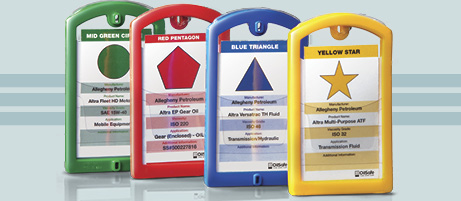Thinking Outside the Box
How In-House Manufacturing Helps Fluid Power Distributors Grow Their Business
By the Epicor Distribution Team, Epicor

The days of distributors succeeding based on being able to pick, pack, and ship are over. The “Amazons” of the world have mastered that. For example, a search on Amazon for “1/2 hose fittings and adapters” returns more than 1,000 results of items that can be delivered as soon as tomorrow. Distributors must be more than just a clearing house for products. They must provide further value to their customers by offering something their competitors cannot—expert staff, exemplary customer service, and custom solutions. Not only does this set the business apart from the competition, but it also generates customer loyalty, draws in new customers, and helps grow the business—not to mention standing out from the “smiling boxes” in customers’ receiving departments.
It’s now become very common for fluid power distributors to offer manufacturing to add value to their customers. They’ve been so successful that a significant portion of the business comes from manufacturing activities, in other words they’ve morphed themselves into “distrifacturers.” Manufacturing in this context may mean anything from simple kitting to complex assemblies that require CAD design and take months to complete.
Offering manufacturing services is a strategic decision that must align with company goals and objectives since it requires realigning your resources, including operations, staff, and facilities. It must also be carefully weighed against other company objectives. If your business has yet to offer manufacturing services, you must decide whether it can become a core competency or if it will only become a drain on your resources.
To successfully add manufacturing to your distribution business, you need the resources to design and complete the manufacturing work. But you also need an enterprise resource planning (ERP) system that can combine the distribution functionality you need with the ability to enter and track your manufacturing projects. This includes the ability for material requirements from manufacturing jobs to feed into forecast and replenishment calculations, as well as tracking job status and work in process. For example, many fluid power distributors provide light manufacturing for hose configurations—from taking the order, to determining the lengths/cuts and the required hardware, and finally processing the order. It’s vital to have an ERP system that can accommodate these requirements.
Not all ERP systems designed for distributors can handle manufacturing tasks, and it’s not practical to deploy multiple ERP systems just to add manufacturing services to your distribution business. Separate ERP solutions for distribution and manufacturing require tight integration, which costs more money, requires more resources, and runs the risk of data falling out of sync. In addition, fluid power distributors can more easily solve daily challenges when they deploy an ERP system that’s built specifically for their unique needs.
Utilizing a single, industry-specific ERP solution that’s capable of managing both distribution and manufacturing functionality provides economy of scale and allows you to maximize the return on your investment. It lets you streamline assembly processing, ensure real-time communication and visibility across the entire assembly production cycle, improve inventory management, enhance the customer experience, and provide complete data analytics for informed decision making—both on the individual transaction level and more long-term business trends.
There are a lot of aspects to consider when selecting ERP software to manage distribution & manufacturing. Here are the top eight:
1. Agility: You can’t always predict the direction future growth will take. A software vendor that can keep pace is essential.
2. Innovation: An ERP partner who supports innovation is useful. One who understands the risks—and helps you navigate them—is invaluable.
3. Implementation: If you have problems at this stage, it can have a lasting effect on your ERP system’s performance as well as your profits. Look for a partner with a proven record.
4. Industry expertise: A partner with specialized industry expertise can bring useful perspective and insight to your ERP system.
5. Scalability: An ERP system built on scalable architecture will help you manage growth. And the fewer customizations a system requires to meet your specific needs, the better.
6. Deployment options: On-premises, cloud, or hybrid deployment options—combined with mobile access for your employees—help ensure that your organization remains flexible and responsive.
7. Ease of use: Nobody wants to wade through a difficult and unfriendly learning curve. An ERP system with an intuitive user interface will increase employee satisfaction and productivity.
8. Functionality: An ERP system requires the capability to do everything that your ERP strategy demands of it. It must be fast, reliable, and easy to integrate with your other systems.
Standing out from the competition hinges on exceeding customer expectations. Offering manufacturing services helps you outshine the Amazons of the world. Make sure the strategy behind this decision includes creating the infrastructure to simplify managing distribution and manufacturing processes together.







